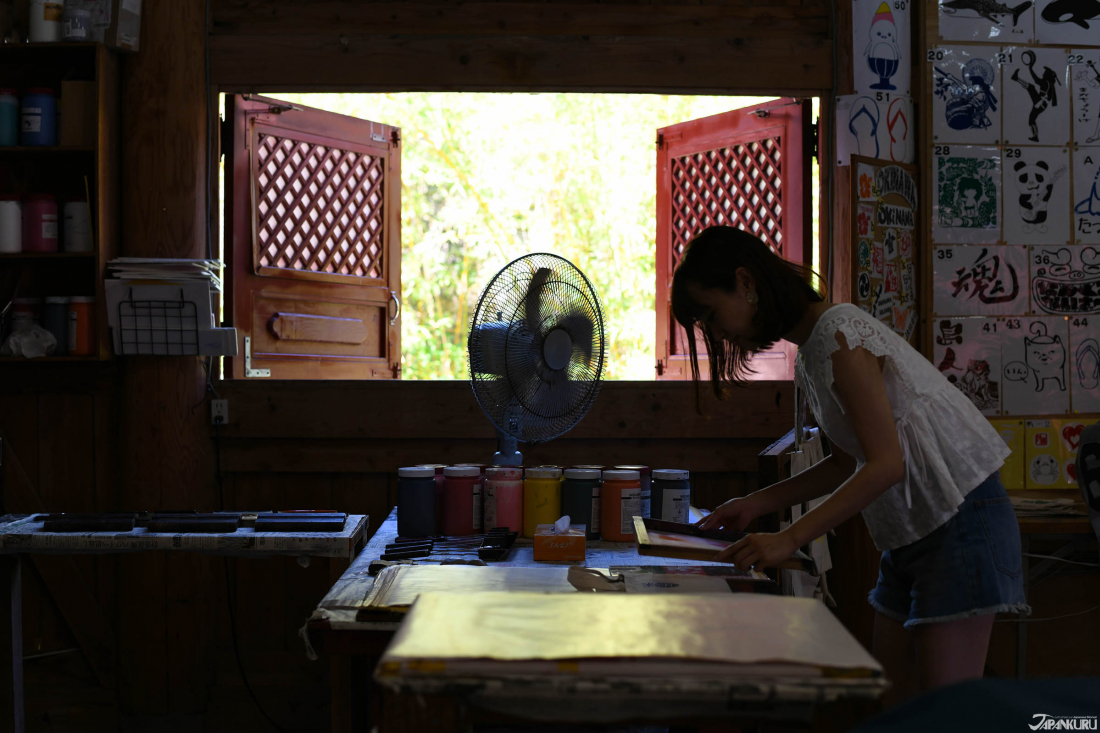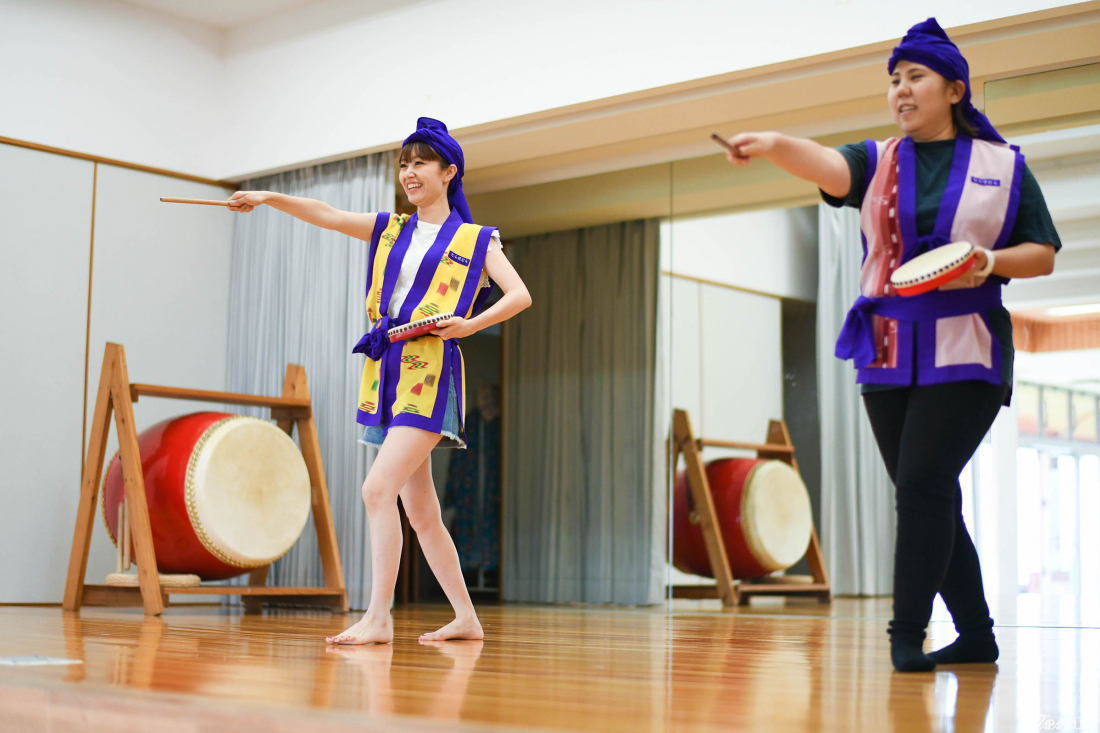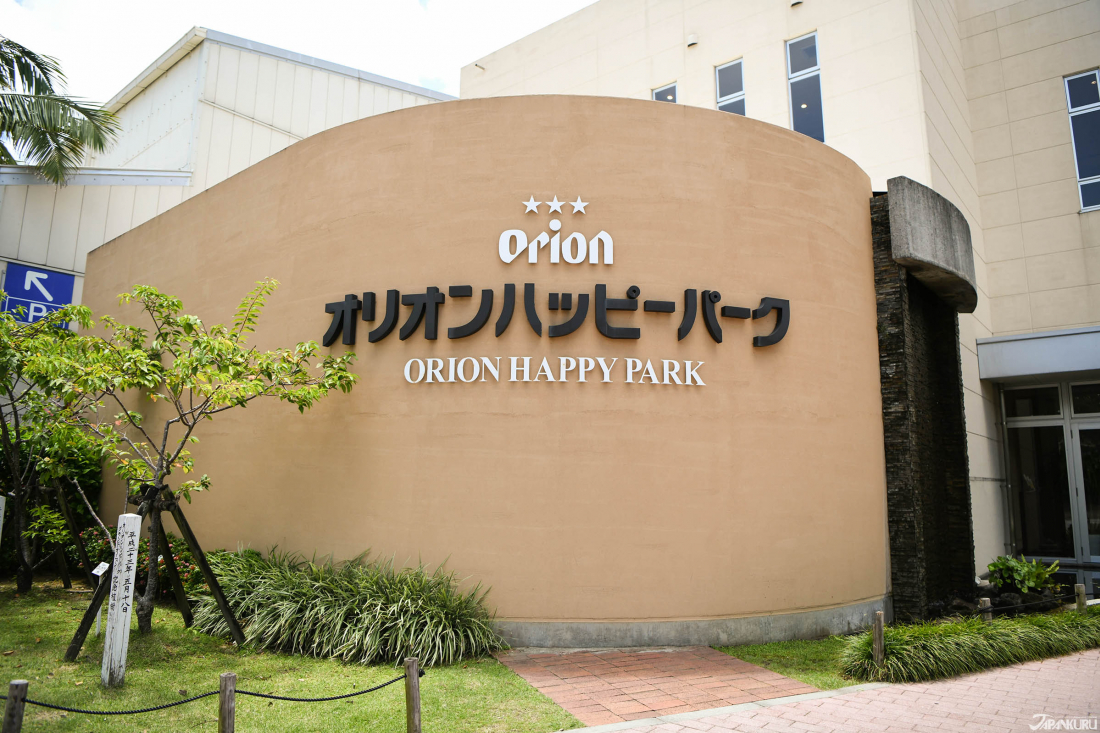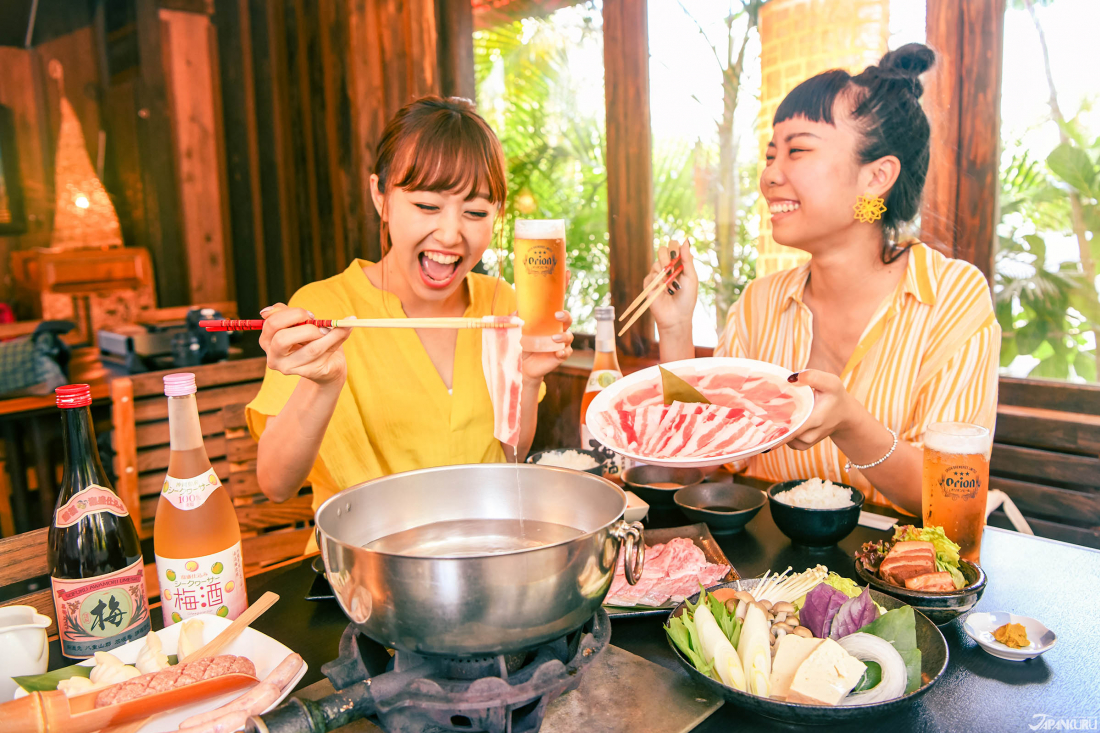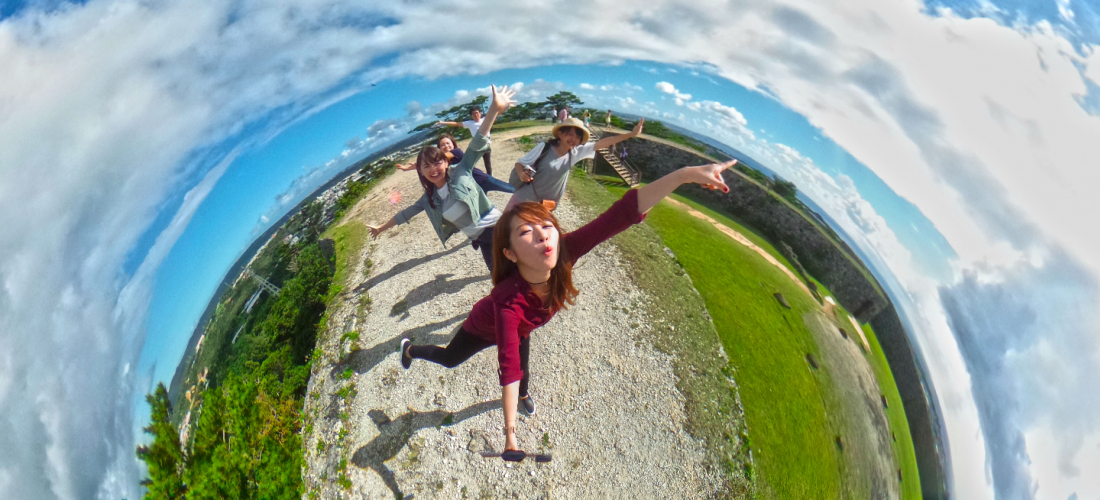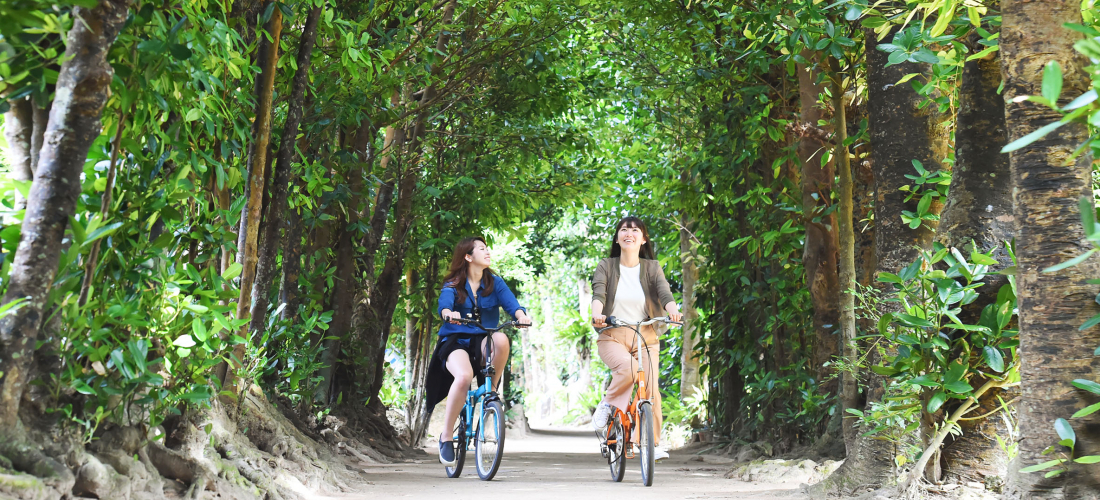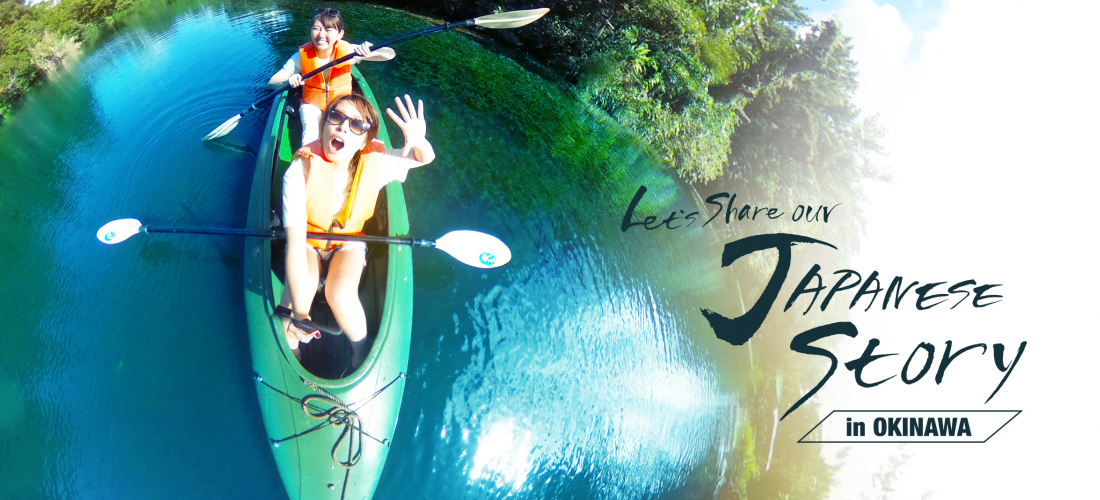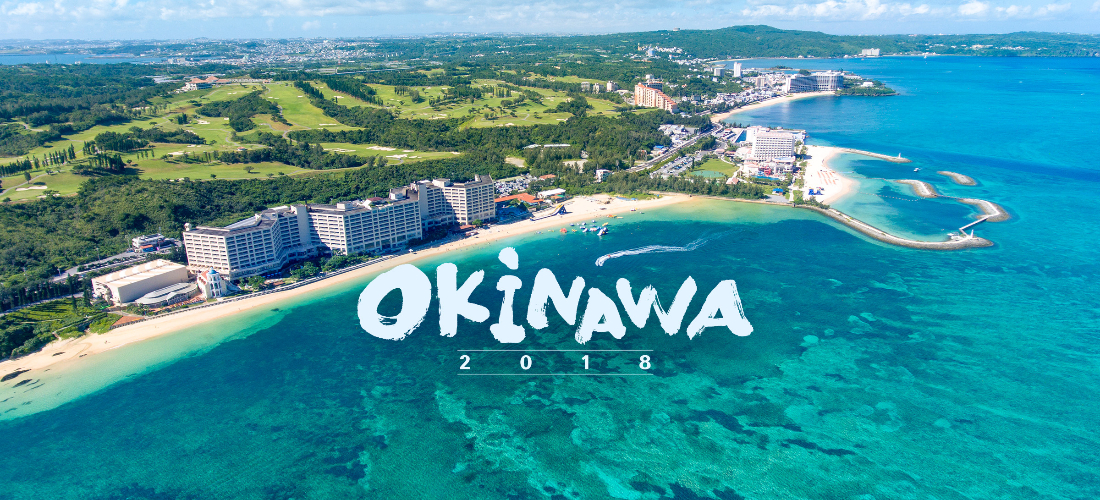
CONTENTS
Murasaki Mura Ryukyu Kingdom Theme Park (体験王国 むら咲むら)
Then you should check out Murasaki Mura Ryukyu Kingdom Theme Park (体験王国 むら咲むら)!
Murasaki Mura is basically a cultural theme park where you can experience many different parts that make Okinawa so special and different from the main island of Japan. It's a reproduction of its capital Naha City during the 14th and 15th centuries when Okinawa was known as the Ryukyu Kingdom. Before entering the experience part of the kingdom, check out the village of Okinawa's ancient buildings. A large part of this facility in Murasaki Mura has been shot in scenes for many Japanese TV shows (dramas) which is proof of its authenticity. There are a total of 32 workshops and 101 kinds of experience activities, so you can definitely find the perfect cultural aspect of Okinawa that you want to experience here!
Take a look at what sort of things JAPANKURU got to experience at Murasaki Mura!
🎪Murasaki Mura Ryukyu Kingdom Theme Park (体験王国 むら咲むら)
🏢1020-1 Takashiho, Yomitan, Nakagami District, Okinawa
Google Maps
⏰9am~6pm (no holidays)
💴Infants free, elementary school 400yen, middle and high school 500yen, adults (college↑) 600yen
What Can You Do at Murasaki Mura Ryukyu Kingdom Theme Park?
One of Okinawa's famous traditional souvenirs is "Ryukyu Glass", which goes all the way back to Japan's Meiji era (1868 to 1912). The glass was used to make bottles for primary medicine as well as lamp chimneys, but after WWII much of the island was destroyed (literally and spiritually). So as a way to bring back moral, many craftsmen scrambled around the island to make use of available materials discarded by the Americans mostly on military bases. It was from this "trash" that they melted the glass down and shaped it into glasses, vases, and dishes. It was from there Ryukyu glass made its mark into a traditional Okinawan art and became a popular souvenir of the island.
Knowing how important Ryukyu glass is to Okinawa, when we saw there was an area to create your own Ryukyu glass tableware it was immediately added to our to-do list.
Since glass crafts deal with high-temperature tools, you have to be careful but since the staff are all highly trained professionals there is nothing to worry about. Just be careful. The cups you make are available for pick-up the next day, but if that doesn't work with your schedule don't worry! Worldwide shipping is available here for a separate fee, so you are sure to get your work of art✨
🎐Blown Glass (吹きガラス体験)
●Location: Glass Studio Umikaze (ガラス工房 海風)
💴 From 2,400 yen
*Prices vary depending on the form and color
⏰Time needed: 5~10mins/person
*You can choose the shape, color, etc of the glass
💻Murasaki Mura page (JPN)
Create your very own original, one of a kind designs and print it on an all-white T-shirt. If you don't want to make a T-shirt, you can also design your own tote bag!👜 There are tons of screens with traditional Okinawan print which makes it a fun Okinawan souvenir. There are two options to choose from:
❶Screen Printing (スクリーン印刷体験): Select an existing design and print it on a white T-shirt
💴From 1,458 yen
Time needed: 1hr (1 to 15 people)
❷Original T-shirt Printing (オリジナル版Tシャツ制作体験 ): Make an original copy and print it on a white T-shirt.
In addition to logo marks and names, illustrations, team names, and more are available
💴From 3,132 yen
⏰Time needed: 1hr 1/2 (1 to 15 people)
●Location: Angel Hall Screen T-shirt Studio (天使館内 スクリーンTシャツ工房)
*Max group of 50 allowed (If you're in a big group, making a reservation in advance is best)
💻Murasaki Mura page (JPN)
💃Traditional Okinawan Dance, Eisa Lessons (エイサー体験) 🥁
Eisa is a form of folk dance originating from the Okinawa Islands, Japan. It originally was done to honor the spirits of their ancestors. If you're in Okinawa during O-bon (a Japanese holiday normally in the middle of August), you can hear sounds of taiko (Japanese drums) being played every night. When you go to Murasaki Mura you can also learn the Eisa dance! They'll give you a traditional garment to wear and a small taiko, then teach you step-by-step🎶 This was probably one of our favorites at Murasaki Mura. It's a super fun Okinawa experience even if you aren't coordinated.
🥁Eisa Lessons (エイサー体験)
●Location: Experience Stage Visitor Center Dance Room
(体験舞台 又は 体験ビジターセンター内 舞踊体験室)
*Group more than 4 people, children 5 and above can join
💴1,620 yen
⏰Time needed: 1hr
💻Murasaki Mura page (JPN)
You can also enjoy local Okinawa food at Murasaki Mura. One thing you can't overlook is "Okinawa soba". Looking at it you may be confused since the noodles look more like udon noodles instead of soba. That's because it's made from completely different ingredients. Unlike "regular" soba which is made from buckwheat, Okinawan soba is made of wheat. Chewy like udon noodles, the broth is normally pork-based and comes with green onions, ginger, kamaboko (fish cake), and pork. It's a great place to try Okinawa's famous noodles and pork!
🍜Janatei (謝名亭)
⏰11am~6:30pm (last order 6pm)
💻Murasaki Mura page (JPN)
Okinawa Beer Brewery Tour
For beer lovers all alike💖
Agu's Hideout (あぐーの隠れ家) is a pork restaurant specializing in Okinawan pork "Agu". Agu pork is quite a high quality of pork due to its scarcity. Something that sets Agu pork aside from other types of pork is primarily it's relatively low in cholesterol, despite its extreme marbling (which also makes it super juicy!). Agu's Hideout most popular way to eat the pork is Shabu-shabu, which is basically a Japanese hotpot where you dip thinly sliced meat and vegetables. This allows you to enjoy Agu pork's true and natural taste on top of experiencing one of Japan's many fun ways to eat. Shab-shabu is said to be really healthy, so there is no shame in eating a ton😋
🍴Agu's Hideout (あぐーの隠れ家)
🏢1-1 Fuchaku, Onna-son, Kunigami-gun, Okinawa
Google Maps
⏰5pm~10:30pm (Last order 10pm)
📖 English menus available
💻Official website (ENG)
PROFILE
Follow us @Japankuru on Facebook, Instagram, and Twitter!
COMMENT
FEATURED MEDIA
VIEW MORE
Narita Airport Tax-Free Shopping List 나리타공항 면세점 쇼핑 리스트 #pr #calbee #jagapokkuru #japanesesnacks #japanesefood #japanesesouvenir #japantravel #japantrip #naritaairport #hokkaido #나리타국제공항 #나리타공항면세점 #나리타공항면세점과자 #일본공항면세점 #일본기념품쇼핑리스트추천 #공항면세점쇼핑리스트 #일본과자추천 #면세점일본과자 #일본기념품추천 #일본과자 #자가폿쿠루 #일본간식 #일본과자쇼핑 #일본면세점필수템 #일본기념품쇼핑

Asakusa's Sanja Matsuri, one of the biggest festivals in all of Tokyo, is almost here! Make sure you check out the festival route so you don't miss all the festivities this May. #asakusa #sanjafestival #sanjamatsuri #asakusashrine #sensoji #sensojitemple #japanesefestival #shintoshrine #japaneseculture #tokyo #tokyotrip #tokyotravel #asakusasightseeing #matsuri #japantrip #japantravel #springinjapan #tokyotravel #japankuru #산자마츠리 #아사쿠사 #일본마츠리 #일본여행 #일본5월

Odaiba's DiverCity Tokyo Plaza is home to the famous real-size 20m-tall Unicorn Gundam, and the popular shopping center has even more Gundam on the inside! Check out the Gundam Base Tokyo on the 7th floor for shelves upon shelves of Gunpla, and the Gundam Base Tokyo Annex on the 2nd floor for cool anime merchandise. Both shops have tons of limited-edition items! #pr #odaiba #tokyo #tokyotrip #japantrip #japantravel #PR #divercity #divercitytokyoplaza #tokyoshopping #gundam #unicorngundam #gundambasetokyo #anime #otaku #gunpla #japankuru #오다이바 #다이바시티도쿄 #오다이바건담 #건담 #일본건담 #건프라 #건담베이스도쿄

Evangelion, in miniature!? Tokyo's SMALL WORLDS Miniature Museum is actually a must-see for anime lovers, thanks to the tiny Evangelion Hangar and Tokyo-III... plus a whole universe of other scenes both real and fictional. #smallworlds #smallworldstokyo #tokyotrip #tokyotravel #evangelion #eva #anime #miniature #miniatures #animefigure #japantrip #japantravel #에반게리온 #스몰월드 #에반겔리온 #スモールワールズ #오다이바 #아리아케

Have you sat down for a snack at Sumida Aquarium yet? This aquarium next to Tokyo Skytree is known for its penguins and garden eels, but we can't get enough of their cute snacks! There are lots of good seats around the aquarium, too, so it almost feels like one big cafe. 🐧 • Find out more at Japankuru.com! (Link in bio.) • #japankuru #sumidaaquarium #skytree #tokyoskytree #solamachi #sumida #tokyo #tokyotrip #tokyotravel #aquarium #japanesesweets #themecafe #すみだ水族館 #Japan #日本 #일본 #Japon #ญี่ปุ่น #Japão #япония #japantravel #日本旅行 #日本旅遊 #japan_of_insta #japantrip #traveljapan #japan🇯🇵 #igerstokyo #explorejapan

For anime fans, the Evangelion areas at Small Worlds Miniature Museum are a must see! The tiny miniature people in the Evangelion Hangar look like ants beneath the moving Unit-01, Unit-00, and Unit-02! And over in Tokyo-III, characters like Shinji, Rei, and Katsuragi live life on a miniature scale. #odaiba #tokyo #tokyotrip #japantrip #japantravel #ariake #smallworlds #miniaturemuseum #smallworldstokyo #tokyotravel #evangelion #eva #anime #miniature #miniatures #animefigure #japankuru #스몰월드 #에반게리온 #오다이바 #오다이바관광 #오다이바스몰월드 #미니어쳐





